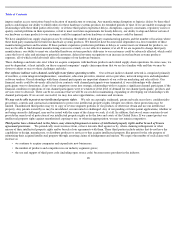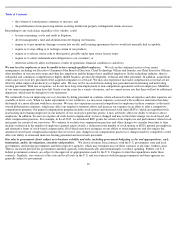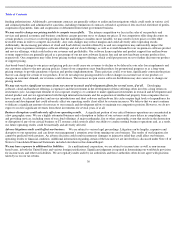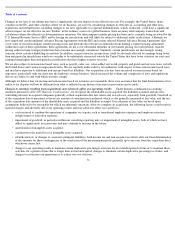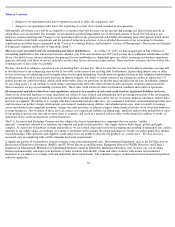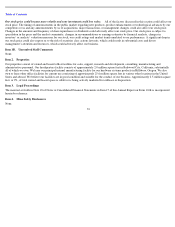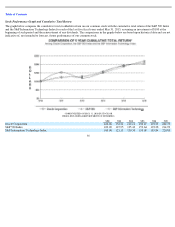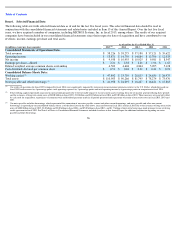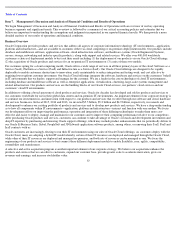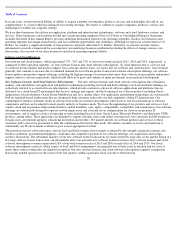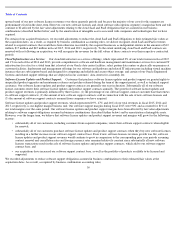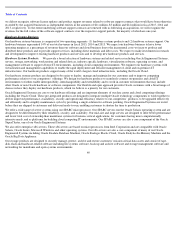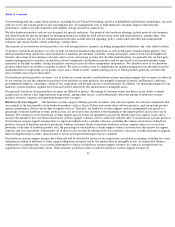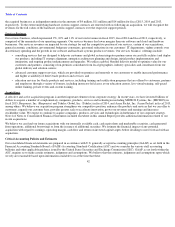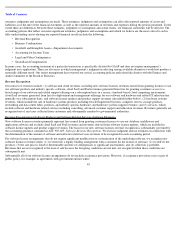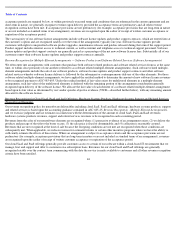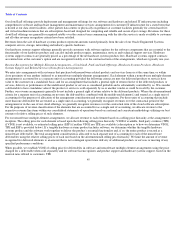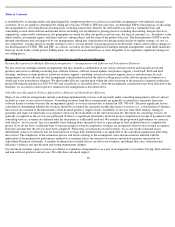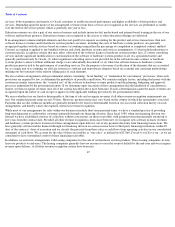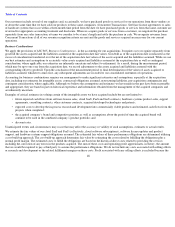Oracle 2014 Annual Report Download - page 42
Download and view the complete annual report
Please find page 42 of the 2014 Oracle annual report below. You can navigate through the pages in the report by either clicking on the pages listed below, or by using the keyword search tool below to find specific information within the annual report.
Table of Contents
In recent years, we have invested billions of dollars to acquire a number of companies, products, services and technologies that add to, are
complementary to, or have otherwise enhanced our existing offerings. We expect to continue to acquire companies, products, services and
technologies to further our corporate strategy.
We have three businesses that deliver our application, platform and infrastructure technologies: software and cloud, hardware systems, and
services. These businesses can be further divided into certain operating segments (Note 16 of Notes to Consolidated Financial Statements,
included elsewhere in this Annual Report, provides additional information related to our operating segments). Each of our businesses and
operating segments has unique characteristics and faces different opportunities and challenges. Although we report our actual results in U.S.
Dollars, we conduct a significant number of transactions in currencies other than U.S. Dollars. Therefore, we present constant currency
information to provide a framework for assessing how our underlying businesses performed excluding the effects of foreign currency rate
fluctuations. An overview of our three businesses and related operating segments follows.
Software and Cloud Business
Our software and cloud business, which represented 77%, 76% and 75% of our total revenues in fiscal 2015, 2014 and 2013, respectively, is
comprised of three operating segments: (1) new software licenses and cloud software subscriptions, (2) cloud infrastructure as a service and
(3) software license updates and product support. On a constant currency basis, we expect that our software and cloud business’ total revenues
generally will continue to increase due to continued demand for our software products and cloud software subscription offerings, our software
license updates and product support offerings, including the high percentage of customers that renew their software license updates and product
support contracts, and our acquisitions, which should allow us to grow and continue to make investments in research and development.
New Software Licenses and Cloud Software Subscriptions:
Our new software licenses and cloud software subscriptions line of business
markets, sells and delivers our application and platform technologies including our SaaS and PaaS offerings (our SaaS and PaaS offerings are
collectively referred to as cloud software subscriptions), which provide customers a choice of software applications and platforms that are
delivered via a cloud-based IT environment that we host, manage and support, and the licensing of our software products including Oracle
Applications, Oracle Database, Oracle Fusion Middleware and Java, among others. Our application and platform technologies are substantially
built on standards-based architectures that are designed to help customers reduce the cost and complexity of their IT infrastructure. Our
commitment to industry standards results in software that works in customer environments with Oracle or non-Oracle hardware or software
components and that can be adapted to meet specific industry or business needs. We focus the engineering of our products and services to best
connect cloud and on-
premises deployment models to enable flexibility, ease, agility, compatibility, extensibility and seamlessness. Our software
offerings are substantially designed to operate on both single server and clustered server configurations for cloud or on-premises IT
environments, and to support a choice of operating systems including Oracle Solaris, Oracle Linux, Microsoft Windows and third party UNIX
products, among others. These approaches are designed to support customer choice and reduce customer risk. Our customers include businesses
of many sizes, government agencies, educational institutions and resellers. We market and sell our software products and services to these
customers with a sales force positioned to offer the combinations that best fit their needs. We enable customers to evolve and transform to
substantially any IT environment at whatever pace is most appropriate for them.
The growth in our new software licenses and our SaaS and PaaS revenues that we report is affected by the strength of general economic and
business conditions, governmental budgetary constraints, the competitive position of our software offerings, our acquisitions and foreign
currency fluctuations. The substantial majority of our new software license transactions are characterized by long sales cycles and the timing of a
few large software license transactions can substantially affect our quarterly new software licenses revenues. New software licenses and cloud
software subscriptions revenues represented 26% of our total revenues in fiscal 2015 and 28% in each of fiscal 2014 and 2013. Our cloud
software subscriptions contracts, which consist of SaaS and PaaS arrangements, are generally one to three years in duration and we strive to
renew these contracts when they are eligible for renewal. Our new software licenses and cloud software subscriptions segment’s margin has
historically trended upward over the course of the four quarters within a particular fiscal year due to the historical
38


